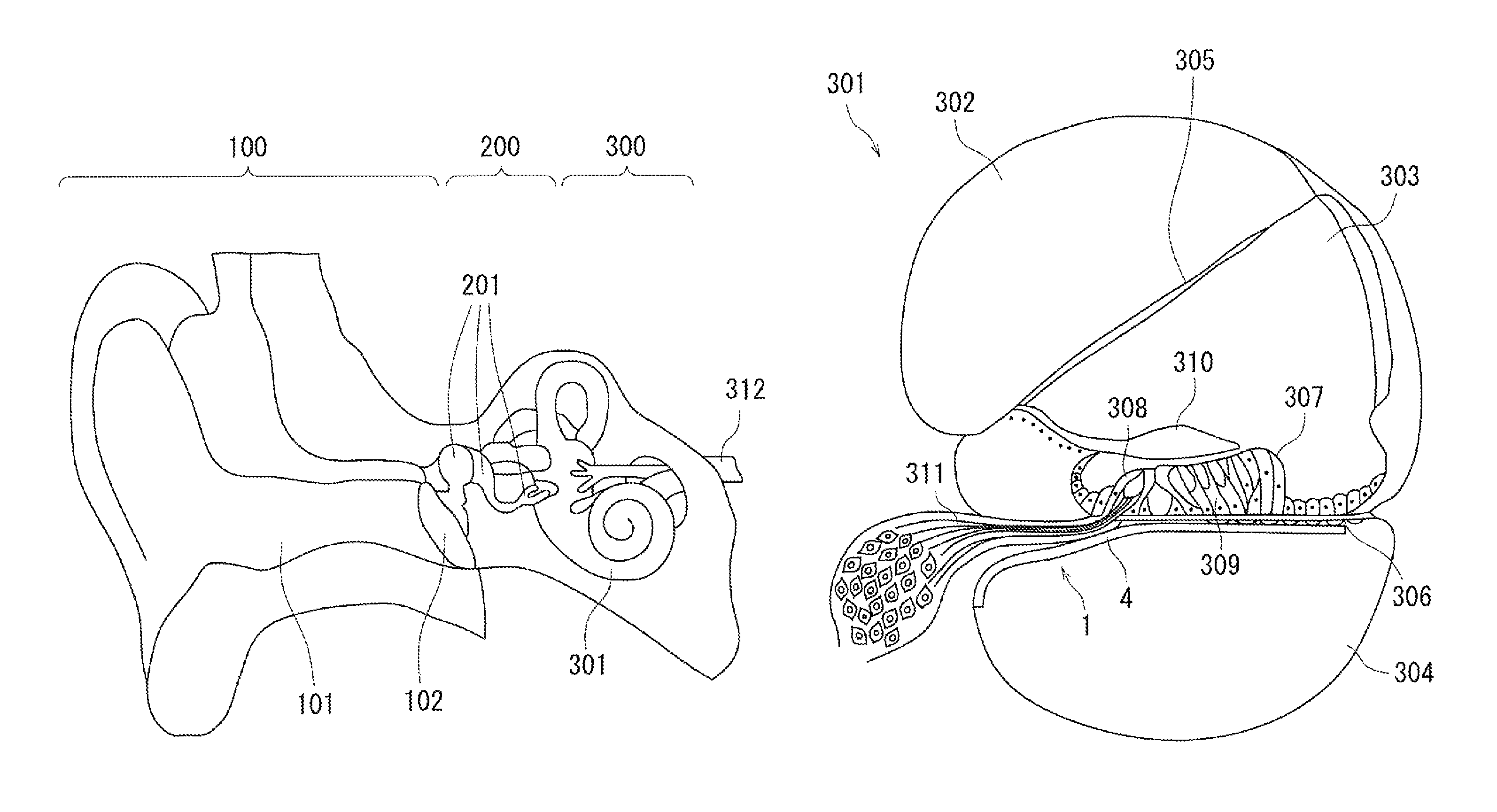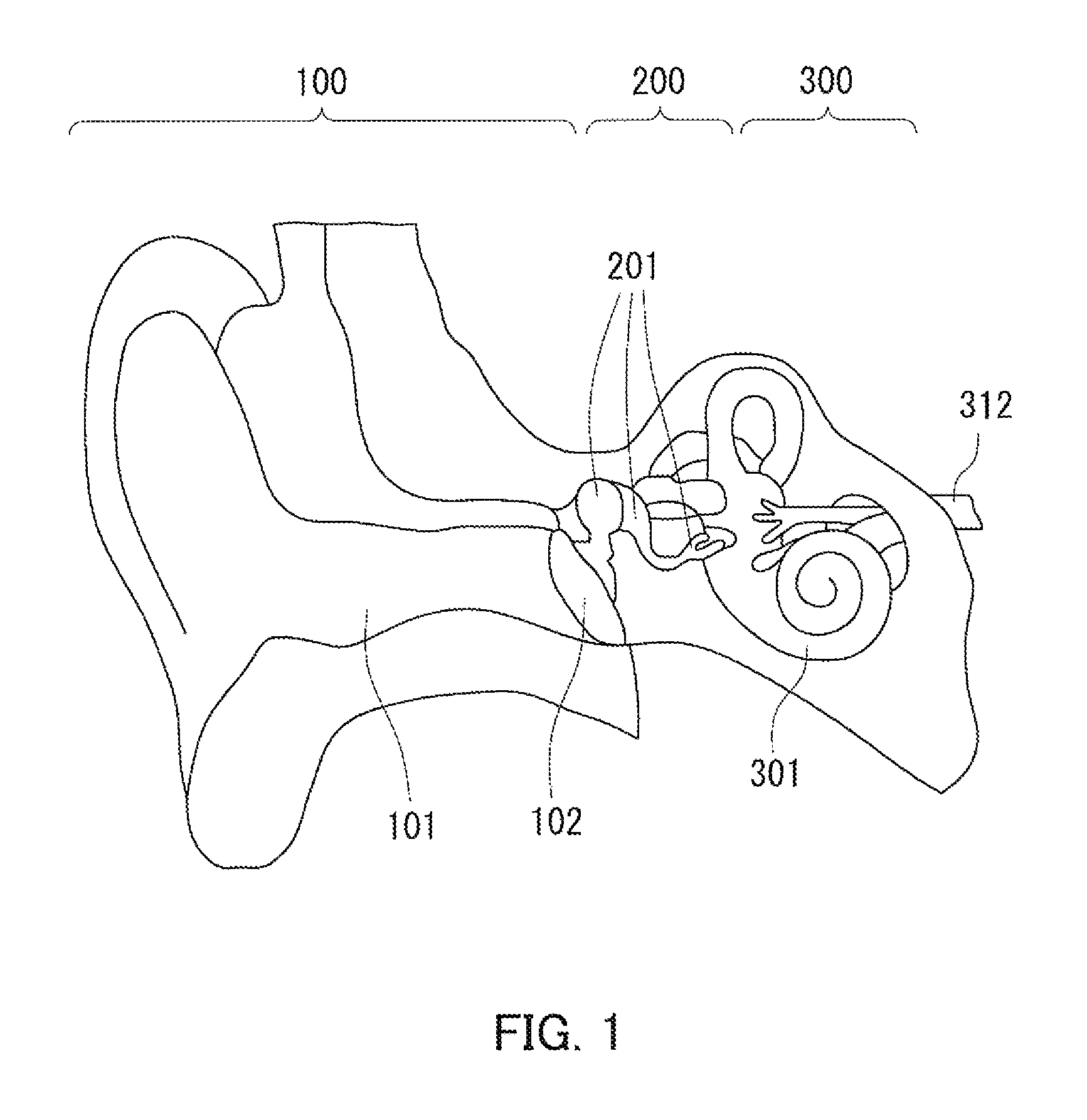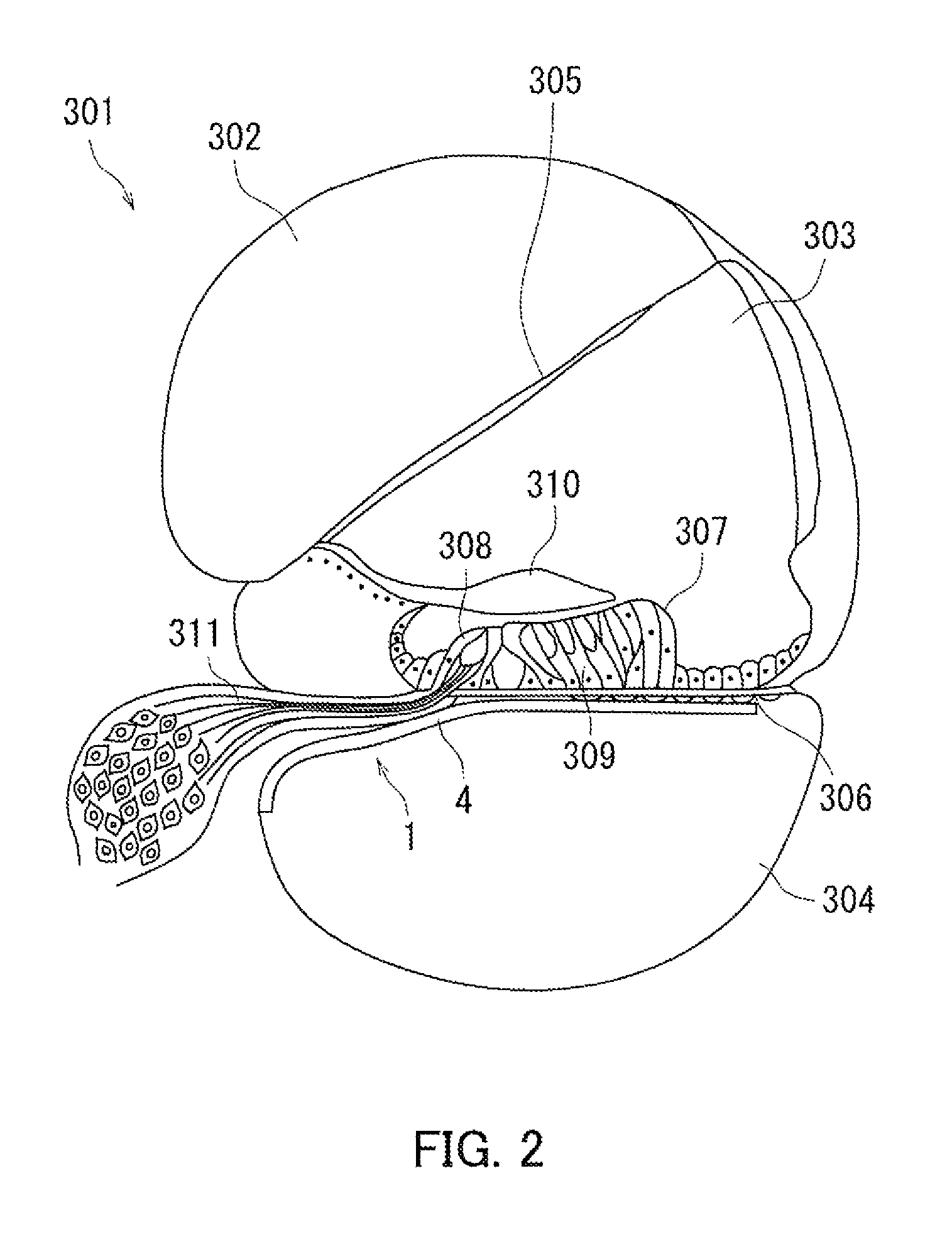Artificial sensory epithelium
a sensory epithelium and epithelium technology, applied in the field of artificial sensory epithelium, can solve the problem that serious sensorineural hearing loss cannot be compensated sufficiently
- Summary
- Abstract
- Description
- Claims
- Application Information
AI Technical Summary
Benefits of technology
Problems solved by technology
Method used
Image
Examples
Embodiment Construction
[0027]Embodiments of an artificial sensory epithelium according to the present invention will be described below with reference to accompanying drawings. Prior to description of the present embodiment, a basic structure of an ear will be described with reference to FIGS. 1 and 2. FIG. 1 is a cross sectional view schematically illustrating the structure of an ear. FIG. 2 is a cross sectional view illustrating the structure of a cochlea.
[0028]An ear as a sense organ administering the auditory sense is divided roughly into an outer ear 100, a middle ear 200, and an inner ear 300, as illustrated in FIG. 1. Sound waves generated outside the ear are guided through an external auditory canal 101 to vibrate a tympanic membrane 102 at the deep end of the external auditory canal 101. An ossicle 201 including three bones transmits the vibration of the tympanic membrane 102 to the inside of the cochlea 301.
[0029]The cochlea 301 has a duct shape of about two and a half turn spiral. As illustrate...
PUM
 Login to View More
Login to View More Abstract
Description
Claims
Application Information
 Login to View More
Login to View More - R&D
- Intellectual Property
- Life Sciences
- Materials
- Tech Scout
- Unparalleled Data Quality
- Higher Quality Content
- 60% Fewer Hallucinations
Browse by: Latest US Patents, China's latest patents, Technical Efficacy Thesaurus, Application Domain, Technology Topic, Popular Technical Reports.
© 2025 PatSnap. All rights reserved.Legal|Privacy policy|Modern Slavery Act Transparency Statement|Sitemap|About US| Contact US: help@patsnap.com



